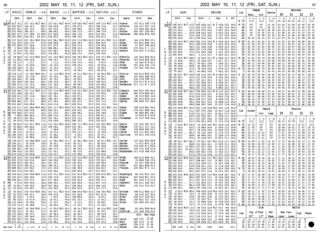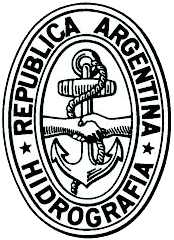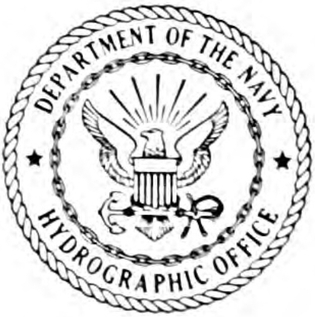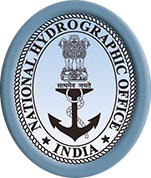Early years, 1862 to 1889
The Navy's Bureau of Navigation was one of three bureaus created by Congress on July 5, 1862, to supersede the Bureau of Construction, Equipment, and Repair, one of the original Navy Department bureaus established on August 31, 1842, to replace the Board of Navy Commissioners.
The new Bureau was initially responsible for providing nautical charts and instruments and for supervising the US Naval Observatory, the Hydrographic Office, and the Nautical Almanac Office. It also had responsibility for the United States Naval Academy, which previously under been under the jurisdiction of the Bureau of Ordnance and Hydrography. In 1867, the Navy Department took the Academy under direct supervision, but for many years the Bureau of Navigation continued to provide routine administration and financial management.
From 1865 to 1884, the Bureau was responsible for the Office of Detail, which handled the assignment and detailing of naval officers. That Office had been established in March 1861, just prior to the outbreak of the Civil War, in the Office of the Secretary of the Navy. The Office of Detail reverted to the Secretary's office on October 1, 1884, but was restored to the Bureau of Navigation a few months later, May 22, 1885. The Office of Detail was reorganized within the Bureau in 1889 as the Division of Officers and Fleet.
Reorganization and acquisition of personnel functions, 1889
The Bureau of Navigation permanently acquired personnel responsibilities in the late 1880s, as part of a Navy Department reorganization. The Bureau exchanged functions with the Bureau of Equipment and Recruiting on June 30, 1889, becoming responsible for enlisted personnel matters. The Bureau of Equipment and Recruiting (later renamed the Bureau of Equipment) acquired responsibility for the Naval Observatory, the Nautical Almanac Office and several other equipment-related offices. Responsibility for the Hydrographic Office was acquired from the Bureau of Navigation nine years, later on May 9, 1898.
The Hydrographic Office and the Naval Observatory (which had taken over the Nautical Almanac Office) returned to the Bureau of Navigation in July 1910. This followed an act of Congress of June 24, 1910, which dispersed the functions of the Bureau of Equipment.
On November 18, 1909, the Bureau of Navigation became part of the Navy Department's newly established Division of Personnel. Status as an autonomous bureau was regained when the Division of Personnel was abolished on April 25, 1913.

The United States Naval Observatory (USNO) is a scientific and military facility that produces geopositioning, navigation and timekeeping data for the United States Navy and the United States Department of Defense. Established in 1830 as the Depot of Charts and Instruments, it is one of the oldest scientific agencies in the United States, and remains the country's leading authority for astronomical and timing data for all purposes.

The Bureau of Naval Personnel (BUPERS) in the United States Department of the Navy is similar to the human resources department of a corporation. The bureau provides administrative leadership and policy planning for the Office of the Chief of Naval Operations (OPNAV) and the U.S. Navy at large. BUPERS is led by the Chief of Naval Personnel.
A hydrographic office is an organization which is devoted to acquiring and publishing hydrographic information.

A navigator is the person on board a ship or aircraft responsible for its navigation. The navigator's primary responsibility is to be aware of ship or aircraft position at all times. Responsibilities include planning the journey, advising the ship's captain or aircraft commander of estimated timing to destinations while en route, and ensuring hazards are avoided. The navigator is in charge of maintaining the aircraft or ship's nautical charts, nautical publications, and navigational equipment, and they generally have responsibility for meteorological equipment and communications. With the advent of satellite navigation, the effort required to accurately determine one's position has decreased by orders of magnitude, so the entire field has experienced a revolutionary transition since the 1990s with traditional navigation tasks, like performing celestial navigation, being used less frequently. Using multiple independent position fix methods without solely relying on electronic systems subject to failure helps the navigator detect errors. Professional mariners are still proficient in traditional piloting and celestial navigation.
The Bureau des Longitudes is a French scientific institution, founded by decree of 25 June 1795 and charged with the improvement of nautical navigation, standardisation of time-keeping, geodesy and astronomical observation. During the 19th century, it was responsible for synchronizing clocks across the world. It was headed during this time by François Arago and Henri Poincaré. The Bureau now functions as an academy and still meets monthly to discuss topics related to astronomy.

A nautical almanac is a publication describing the positions of a selection of celestial bodies for the purpose of enabling navigators to use celestial navigation to determine the position of their ship while at sea. The Almanac specifies for each whole hour of the year the position on the Earth's surface at which the Sun, Moon, planets, and First Point of Aries is directly overhead. The positions of 57 selected stars are specified relative to the First Point of Aries.

The United Kingdom Hydrographic Office (UKHO) is the UK's agency for providing hydrographic and marine geospatial data to mariners and maritime organisations across the world. The UKHO is a trading fund of the Ministry of Defence (MoD) and is located in Taunton, Somerset, with a workforce of approximately 900 staff.
The Bureau of Construction and Repair (BuC&R) was the part of the United States Navy which from 1862 to 1940 was responsible for supervising the design, construction, conversion, procurement, maintenance, and repair of ships and other craft for the Navy. The bureau also managed shipyards, repair facilities, laboratories, and shore stations.
The Bureau of Ordnance (BuOrd) was a United States Navy organization, which was responsible for the procurement, storage, and deployment of all naval weapons, between the years 1862 and 1959.
The "bureau system" of the United States Navy was the Department of the Navy's material-support organization from 1842 through 1966. The bureau chiefs were largely autonomous, reporting directly to the Secretary of the Navy and managing their respective organizations without the influence of other bureaus. In 1966, the bureaus were gradually replaced by unified commands reporting to the Chief of Naval Operations.
The United States Navy's Bureau of Ships (BuShips) was established by Congress on 20 June 1940, by a law which consolidated the functions of the Bureau of Construction and Repair (BuC&R) and the Bureau of Engineering (BuEng). The new bureau was to be headed by a chief and deputy-chief, one selected from the Engineering Corps (Marine Engineer) and the other from the Construction Corps (Naval Architect). The chief of the former Bureau of Engineering, Rear Admiral Samuel M. "Mike" Robinson, was named BuShips' first chief, while the former chief of the Bureau of Construction & Repair, Rear Admiral Alexander H. Van Keuren, was named as BuShips' first Deputy-Chief. The bureau's responsibilities included supervising the design, construction, conversion, procurement, maintenance, and repair of ships and other craft for the Navy; managing shipyards, repair facilities, laboratories, and shore stations; developing specifications for fuels and lubricants; and conducting salvage operations.
The Naval Oceanographic Office (NAVOCEANO), located at John C. Stennis Space Center in south Mississippi, comprises approximately 1,000 civilian, military and contract personnel responsible for providing oceanographic products and services to all elements within the Department of Defense.

The Chief of Naval Personnel (CNP) is responsible for overall manpower readiness for the United States Navy. As such the CNP is the highest ranking human resources officer in the Navy. The CNP also serves as Deputy Chief of Naval Operations and is one of five Deputy Chiefs of Naval Operations, with the identification of N1/NT. The CNP oversees the operations of the Bureau of Naval Personnel (BUPERS), Navy Personnel Command (NPC) and the Navy Manpower Analysis Center (NAVMAC). The CNP and the other four DCNOs are nominated by the President of the United States and must be confirmed via majority vote by the Senate. The CNP and the DCNOs are appointed as a three-star vice admiral while holding office.
The Australian Hydrographic Service is the Australian Commonwealth Government agency responsible for providing hydrographic services that meet Australia's obligations under the SOLAS convention and the national interest; enabling safe navigation, maritime trade and supporting protection of the marine environment. The agency, headquartered at the Australian Hydrographic Office in Wollongong, New South Wales, is an element of the Royal Australian Navy (RAN), and serves both military and civilian functions. The names Australian Hydrographic Service and the Australian Hydrographic Office are commonly abbreviated as AHS or AHO respectively.
The Office of Coast Survey is the official chartmaker of the United States. It is an element of the National Ocean Service in the National Oceanic and Atmospheric Administration, which is part of the United States Department of Commerce.

The Argentine Hydrographic Service is the branch of the Ministry of Defense responsible for providing hydrographic services.

The United States Hydrographic Office prepared and published maps, charts, and nautical books required in navigation. The office was established by an act of 21 June 1866 as part of the Bureau of Navigation, Department of the Navy. It was transferred to the Department of Defense on 10 August 1949. The office was abolished on 10 July 1962, replaced by the Naval Oceanographic Office.

The Indian Naval Hydrographic Department (INHD), headed by the Chief Hydrographer to the Government of India, is an Indian government agency responsible for hydrographic surveys and nautical charting in India. Its headquarters National Hydrographic Office is located in Dehradun, Uttarakhand beside the Principal Controller of Defense Accounts Office. Presently, the department is equipped with Seven indigenously built survey ships including a catamaran hull survey vessel (CHSV). The National Institute of Hydrography is the training institute to impart knowledge regarding hydrography and to train its personnel. Two more ships are currently being constructed and is expected to be commissioned into service by 2025-26.

The Russian Hydrographic Service, full current official name Department of Navigation and Oceanography of the Ministry of Defence of the Russian Federation, is Russia's hydrographic office, with responsibility to facilitate navigation, performing hydrographic surveys and publishing nautical charts.
![]() This article incorporates public domain material from Records of the Bureau of Naval Personnel. National Archives and Records Administration.
This article incorporates public domain material from Records of the Bureau of Naval Personnel. National Archives and Records Administration.








